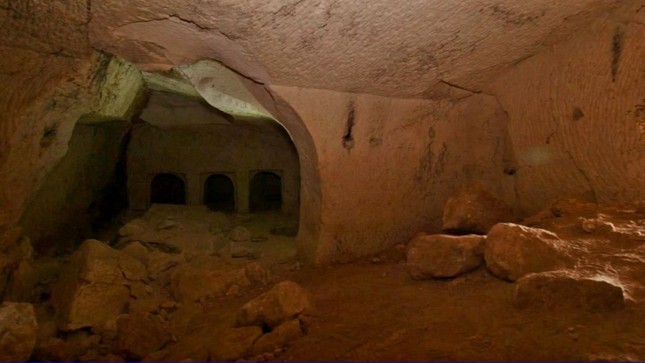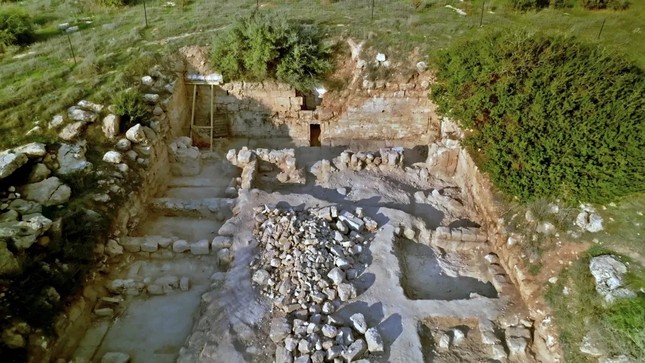Blog
Excavating the Tomb of Jesus’ Midwife: The Mysterious Woman Mentioned in the Bible
Archaeologists in Israel have discovered new artifacts and carvings in the Salome Cave, a pilgrimage site for early Christians believed to be the burial place of Salome, who is thought to have been the midwife of Jesus. The burial cave and its courtyard, located about 48 km southwest of Jerusalem, were exposed by grave robbers in the 1980s but have since been closed to the public.
Discoveries in Salome Cave
The discoveries at Salome Cave, near the ancient city of Lachish and about 48 km southwest of Jerusalem, include hundreds of clay oil lamps that pilgrims purchased or rented before entering the cave, and inscriptions on the walls by worshippers, some of which were written in Arabic.
Although grave robbers found the cave 40 years ago and archaeologists excavated the site in 1984, the recent excavation is the first to examine the cave’s forecourt, a 350-square-meter area decorated with mosaic floors and surrounded by stone walls.
Rich Symbolic Decorations
The cave entrance is richly decorated with symbolic carvings of rosettes, pomegranates, and acanthus vases, a type of vase covered with decorative leaves of the acanthus plant, which is thought to be a characteristic Jewish design, according to a statement from the Israel Antiquities Authority (IAA). Christian pilgrims visited the cave during the Byzantine period, from the fifth century CE; but evidence suggests that a wealthy Jewish family originally used the cave for burial about 2,000 years ago, IAA researchers said.
Historical Significance
“The family tomb demonstrates that its owners were a family of high status in the Judean Shefelah region, dating from 516 BCE to 70 CE,” the statement said. “The name Salome may have appeared in antiquity on one of the ossuaries [stone boxes] in the tomb, and tradition identifies this site with the ‘midwife’ Salome.”
Salome: The “Midwife” of Jesus

The story of the “midwife” Salome is told in the Gospel of James, considered apocryphal by Christians, meaning its authenticity is doubtful, and it does not appear in the New Testament. It is said that her arm withered because she doubted the virgin birth of Jesus, but it was healed when she touched Jesus’ cradle.
Salome is largely unknown to Western Christians today, but she was venerated by early Christians and depicted as the “midwife” at Jesus’ birth in many Eastern Orthodox icons.
The Gospel story recounts that Salome was an associate of another unnamed “midwife” at Jesus’ birth; her hand withered when she did not believe Jesus’ mother was a virgin, and it only healed after she touched Jesus’ cradle.
The Cave’s Features
The Salome Cave itself comprises several rooms with numerous rock-hewn burial niches and broken ossuaries, testifying to the original Jewish burial customs. However, what surprised archaeologists is that the site became an early Christian chapel and pilgrimage center.
“Salome is a mysterious figure,” the researchers said in the statement. “The cult of Salome, sanctified in Christianity, is part of a broader phenomenon in which fifth-century pilgrims encountered and sanctified Jewish sites.”
Continued Pilgrimage
Christian pilgrimages to Salome’s cave continued until at least the ninth century CE, during the Islamic period of the region. Archaeologists noted that many of the clay oil lamps discovered in the recent excavation date from the eighth and ninth centuries, possibly allowing pilgrims to venture into the dark cave.
Although the cave has been closed to the public since its discovery in 1980, Salome’s cave might open after the current excavation is completed. The cave will be part of the Judean Kings’ Trail, a 100 km trail through southern Israel that features dozens of important archaeological sites.

